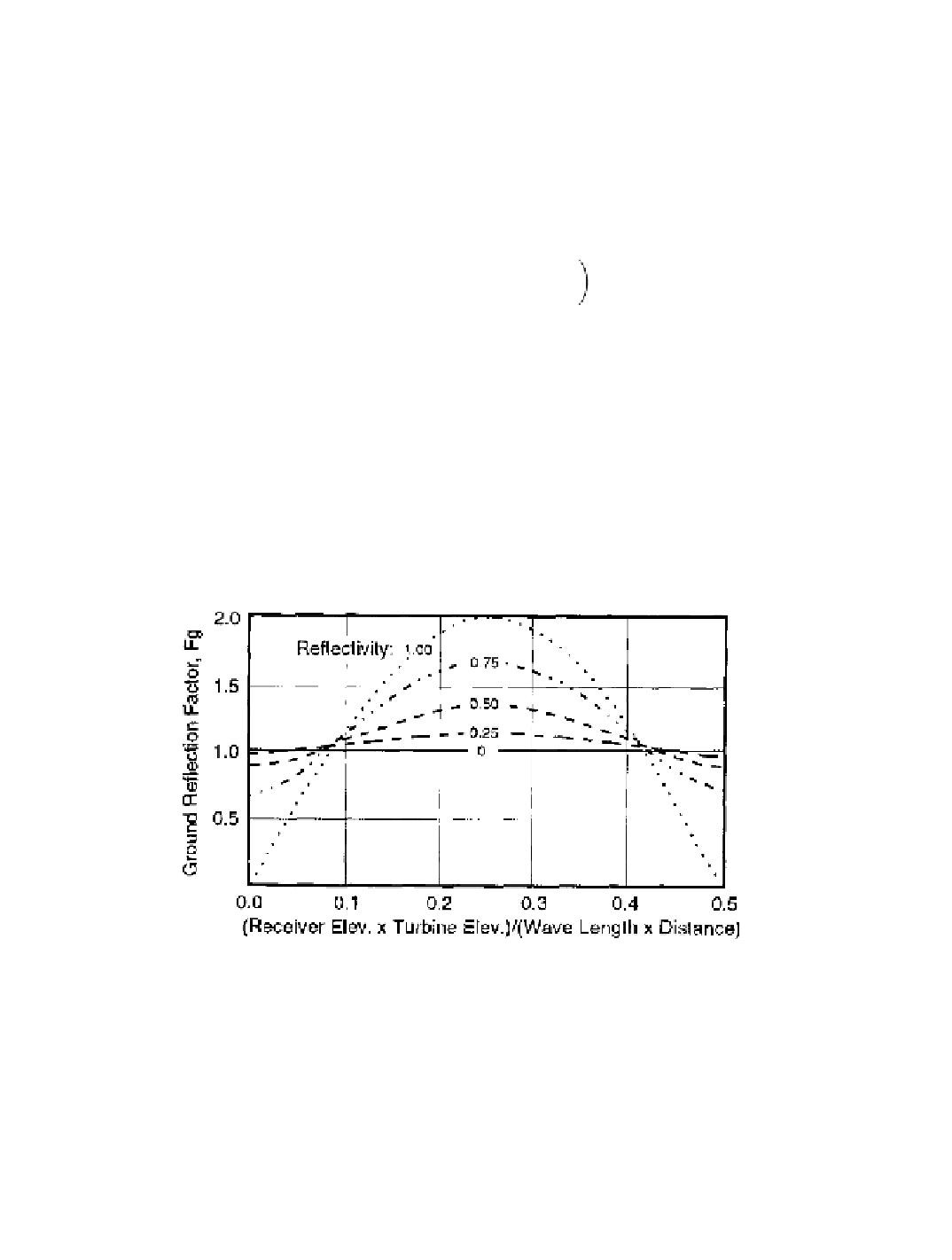Environmental Engineering Reference
In-Depth Information
quent case of a receiver directly between the transmitter and a two-bladed VAWT, only one
blade is effective because the second is shadowed by the first blade and the central column.
Ground Reflection of the Scattered Signal
Under certain terrain conditions, signals scattered by a wind turbine rotor could reach
a receiver after reflection from the ground and interact with the scattered signal transmitted
directly through the atmosphere. Assuming a homogeneous flat earth between the wind
turbine and the receiver, a
ground effect factor
can be calculated as follows [Kerr 1964]:
2p
lz
z
W
z
R
1 - G
2
+ 4G
2
sin
2
(9-25)
F
G
=
where
F
G
= ground reflection amplification factor
G
= amplitude of the reflection coefficient for grazing incidence on the ground
z
R
,
z
W
=
elevations of the receiver and the wind turbine rotor, respectively (m)
The coefficient G
can range from 0 (no reflection) to 1.00 (ideal reflection). Ground
effects can alternate between attenuation and amplification when G
is not zero, as illustrated in
Figure 9-10. For our idealized plate model, we will assume there is no ground reflection
and
F
G
is always unity. However, actual ground reflection coefficients greater than zero
can be a significant cause of deviation between observed and idealized signal scattering.
Figure 9-10. Theoretical ground reflection amplification factors for reflectivity
coefficients from 0 (no reflection) to 1.00 (ideal reflection).
[based on Kerr 1964]
Idealized Signal Scatter Ratio
Using the concepts developed with idealized plate models, we can now define and
calculate
idealized signal scatter ratios
for HAWT and VAWT rotors as follows:



Search WWH ::

Custom Search